Kart bench
Introduction
Moving faster while carrying heavier loads has been a key concern of human societies since the beginning of time. In this context, our predecessors invented automobiles. The study and analysis of vehicle dynamics soon became necessary for ensuring stability and comfort criteria. Since we are not able to observe and understand differences in the vehicle dynamic behavior with regard to parameter variations when we’re on board, a reduced-scale test bench has been built, called here the “kart bench”. Via a deported steering wheel, the bench allows us to see and feel the impact of changes in various tuning parameters, such as toe-in angle, wheel camber and anti-roll bar stiffness on vehicle dynamic behavior.
The following video illustrates the kart bench in general.
Car components
The bench is composed of a vehicle on a 1/3 scale with geometric and dynamic characteristics like those of an automobile. This vehicle is placed on a running platform (conveyor belt) to simulate the effect of a track and is held by a safety arm. No pilot will be present on the kart for safety reasons, and its direction is offset to a console where the steering wheel is placed, at the rear of the bench.
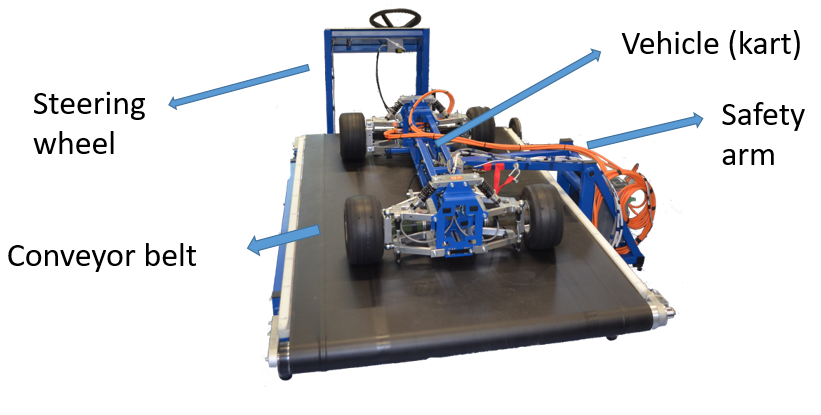
Suspensions
The suspension is the liaison between the ground and the vehicle body which plays multiple roles:
- Carry the vehicle and its useful load in motion while isolating them from the irregularities of the road pavement and the associated vibrations and shocks. This function which often reduces to some comfort criteria is nevertheless essential for the transportation of goods like brittle material.
- Determine the direction of motion taken by the vehicle in motion. The suspension makes the driver able to safely drive the vehicle on the desired trajectory, trough the steering mechanism.
- Put in motion or stop the vehicle. In a classical way, the suspensions must transmit the engine torque to the wheels to accelerate while brakes system is responsible for deceleration.
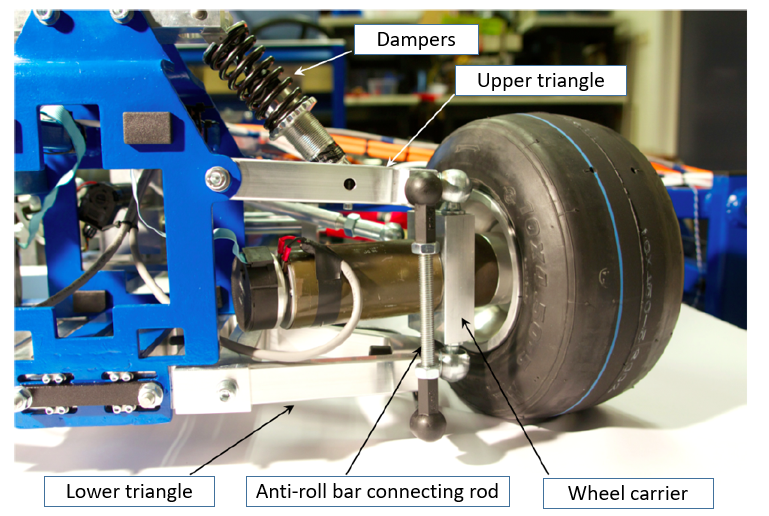
The suspension dynamics is determined by the morphology but above all by the parametrization e.g. multiple dimensions, angles, stiffnesses, dampings, that describe components. The kart allows to modify some of these parameters. We can see in the vehicle movement on the following video that the suspensions are really working.
Steering mechanism
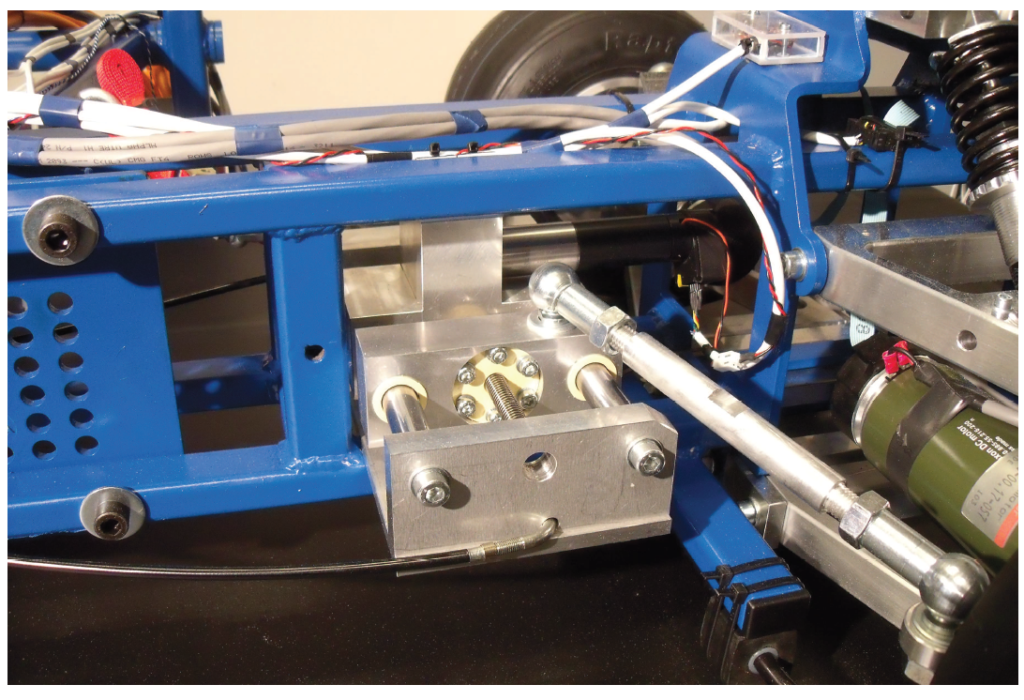
The front wheel steering control is deported to a console. The transmission of the movement is done via cables. A module placed in the console transmits the force applied on the steering wheel to the cables, while another mechanism, mounted on the kart, transmits the effort from the cables to the steering rods. Finally, the linkage pivots the carriers and turns the wheels.
The video shows the steering assembly in action.
Lateral forces influence
The contact forces between tyres and ground are complex. Some models try to approximate their characteristics via fit-based curves, for example the Bakker-Pacejka model that uses experimental data measured during a real-life tyre-ground contact.
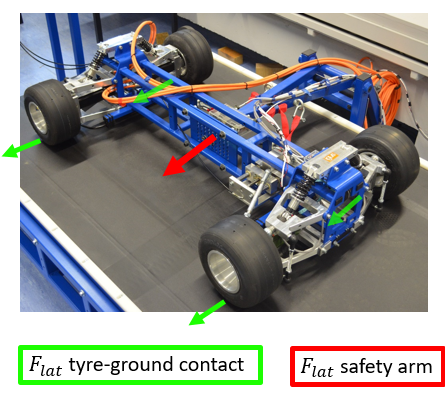
On this kart bench, the safety arm allows the kart to move without getting out of the conveyor belt. The lateral forces are very important regarding the vehicle cornering. A deformation gauge sensor placed on the safety arms allow to measure an equivalent lateral force, corresponding of the contact forces between the belt and the kart tyres. These forces can therefore be shown on real-time graphs.
Toe in/out
The toe in is defined as the angle of the intersection of the wheel median plane and the ground with respect to the longitudinal direction. The toe-in stands for the case for which the median planes intersect ahead of the vehicl (toe out n the opposite case). Small toe in leads to the vehicle more responsive while toe out leads to the vehicle handling floppy. The toe in is very sensitive (classical values of 0.2°…) and the setting of this parameter must be realized carefully.
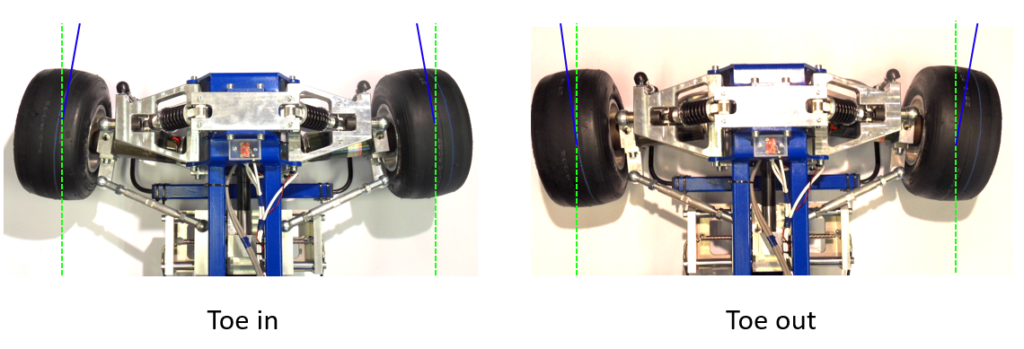
In the kart bench, the toe can be modified in real-time (see the video) and its effects are directly visible and can be felt by the pilot.
To illustrate the importance of this parameters, an infrared camera shows the heating around the tires when the toe value is too high. This corresponds to a high tire wear.